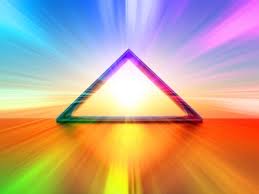The Prismatic Effect

Weekend three with Prashant Iyengar took us down some familiar “schemes and themes” of his study and exploration of asanas. Last weekend he talked a lot about discovering and figuring out how to maximize our study of asanas by becoming aware of our own context and reasoning and devising a practice that opens us up to our fullest potentials.
This week he continued to specify how this exploration can be found in any one asana itself. First of all, reminding us that already we usually “categorize” asanas by “physical description” alone – standing poses, back bends, forward bends, etc…But, in reality, every single pose can be approached in a myriad of ways.
For example, we were in chair Dwi Pada Viparita Dandasana (back bend in a chair) as our asana of exploration and he wanted us to consider it a “leg-asana” or a “waist-asana” or a “back-asana”. Within that one back arch in a chair there are so many associations to make. Remembering too that each of those more specific aspects also lie within the BODY/MIND/BREATH associations that we were talking about last week. For instance, “Leg-asana associated with long exhalation”.
Prashant describes yoga as a “prismatic condition” where the collection of ALL aspects of our being are associated and can be explored together in as many ways as a prism casts colored light. “WE can do anything and everything” in this “collective condition”. And this is very much why Prashant encourages a mind-set of exploration and not “practice”. To “practice” we think someday it will make “perfect” and in our minds “perfect” means “right”. But this is not the case in yoga. “Right” may be imperfect, or just “lacking in perfection”. Depends on the purpose of the action, and the purpose in yoga is always knowledge.
“Yoga leads to freedom and dogma keeps us stuck.”
And then “who” or “what” is the actor? We think in terms of “I” being one thing. “I do Trikonasana” for example. However, as we have come to see through Prashant’s teaching, Trikonasana itself is a myriad of things, a prism full of different angles and aspects to look from and through and with. “YOU” are every one of the many factors that make up your embodiment and any one of those factors can play the role of “doer, doing, or done”. You must become the “knower, knowing, and the known”.
Three books in particular have come up this weekend in case you are curious for clarifications and detail: “Yogasana (the 18 Maha Kriyas of Yogasana)”, “Chittavijnana of Yogasanas”, and “Yogasana, an Adhyatmik Academy” which all can be found in the IYNAUS Store.
The “Adhyatmik Academy” in this case of yoga means that all of our study and exploration is essentially internal. As stated above, the only way to “know thyself” is through thyself and with thyself, becoming the “knower, the knowing, and the known”. And this field of knowing is VAST!!!
The 18 Maha Kriyas he mentions suggest that there are 18 different “schemes” or “fields” to account for in your study. Every realm from just beginning with the “Commencement”, through every layer of body, breath, and mind, senses, elements, wisdom, and energy. As Prashant would say, “yoga really is a MARVEL!”
But this is the “UNION” that yoga promises. Not just an external and superficial combination of “body, mind, and breath” but an ultimate and total knowledge of our being and embodiment through every lens and within every possibility and combination.
It is what makes yoga endlessly fascinating and a work (for most of us) that will last for lifetimes to come!